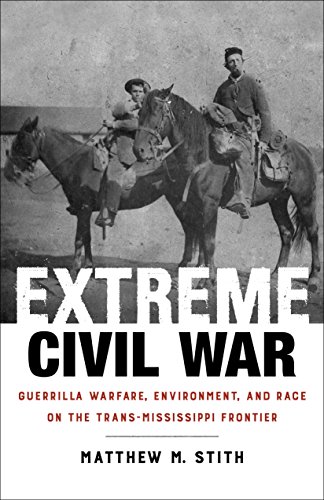

Most ebook files are in PDF format, so you can easily read them using various software such as Foxit Reader or directly on the Google Chrome browser.
Some ebook files are released by publishers in other formats such as .awz, .mobi, .epub, .fb2, etc. You may need to install specific software to read these formats on mobile/PC, such as Calibre.
Please read the tutorial at this link: https://ebookbell.com/faq
We offer FREE conversion to the popular formats you request; however, this may take some time. Therefore, right after payment, please email us, and we will try to provide the service as quickly as possible.
For some exceptional file formats or broken links (if any), please refrain from opening any disputes. Instead, email us first, and we will try to assist within a maximum of 6 hours.
EbookBell Team

4.3
68 reviewsDuring the American Civil War the western Trans-Mississippi frontier was host to harsh environmental conditions, irregular warfare, and intense racial tensions that created extraordinarily difficult conditions for both combatants and civilians. Matthew M. Stith's Extreme Civil War focuses on Kansas, Missouri, Arkansas, and Indian Territory to examine the physical and cultural frontiers that challenged Confederate and Union forces alike. A disturbing narrative emerges where conflict indiscriminately beset troops and families in a region that continually verged on social and political anarchy. With hundreds of small fights disbursed over the expansive borderland, fought by civilians -- even some women and children -- as much as by soldiers and guerrillas, this theater of war was especially savage.
Despite connections to the political issues and military campaigns that drove the larger war, the irregular conflict in this border region represented a truly disparate war within a war. The blend of violence, racial unrest, and frontier culture presented distinct challenges to combatants, far from the aid of governmental services. Stith shows how white Confederate and Union civilians faced forces of warfare and the bleak environmental realities east of the Great Plains while barely coexisting with a number of other ethnicities and races, including Native Americans and African Americans. In addition to the brutal fighting and lack of basic infrastructure, the inherent mistrust among these communities intensified the suffering of all citizens on America's frontier.
Extreme Civil War reveals the complex racial, environmental, and military dimensions that fueled the brutal guerrilla warfare and made the Trans-Mississippi frontier one of the most difficult and diverse pockets of violence during the Civil War.